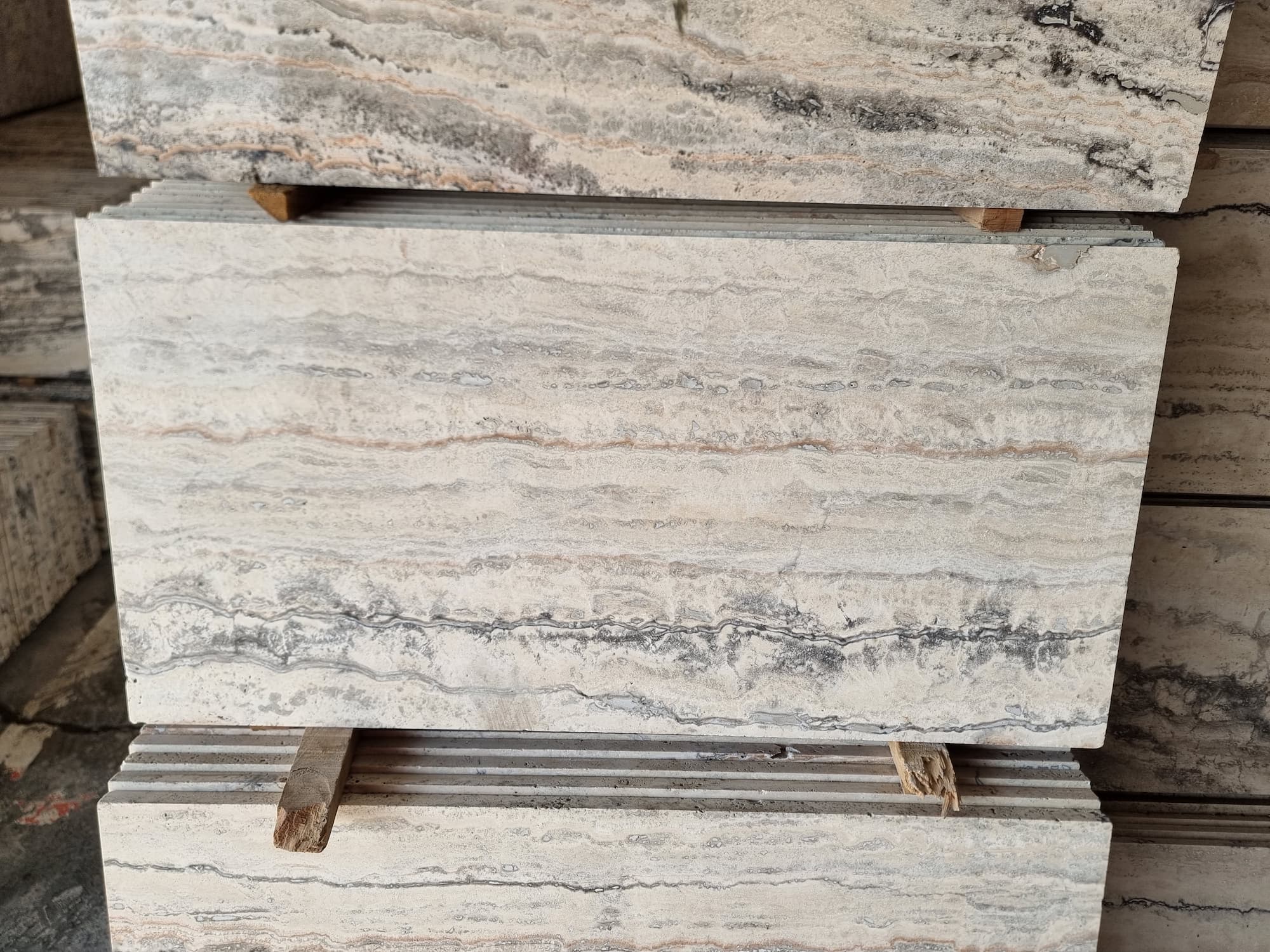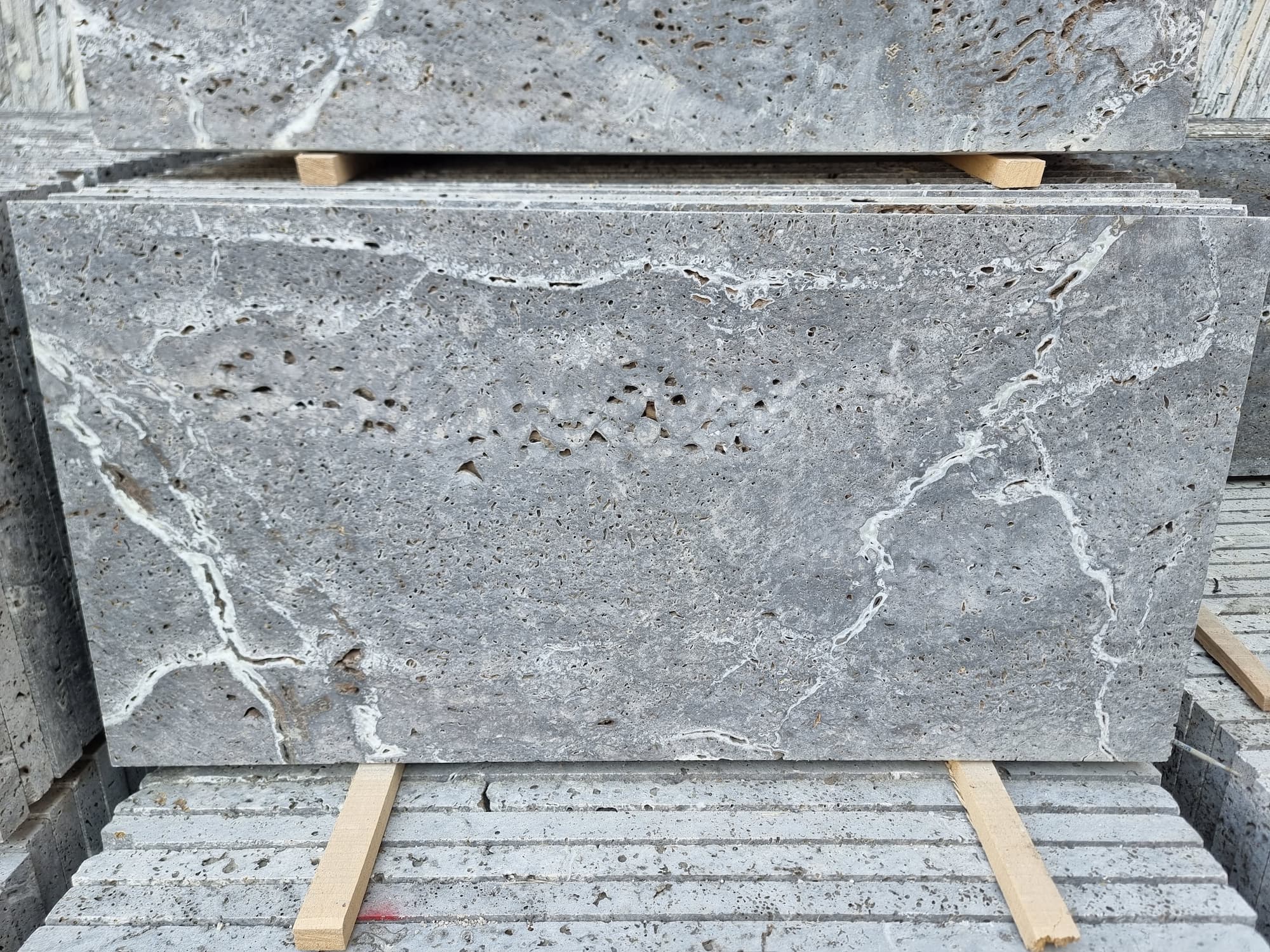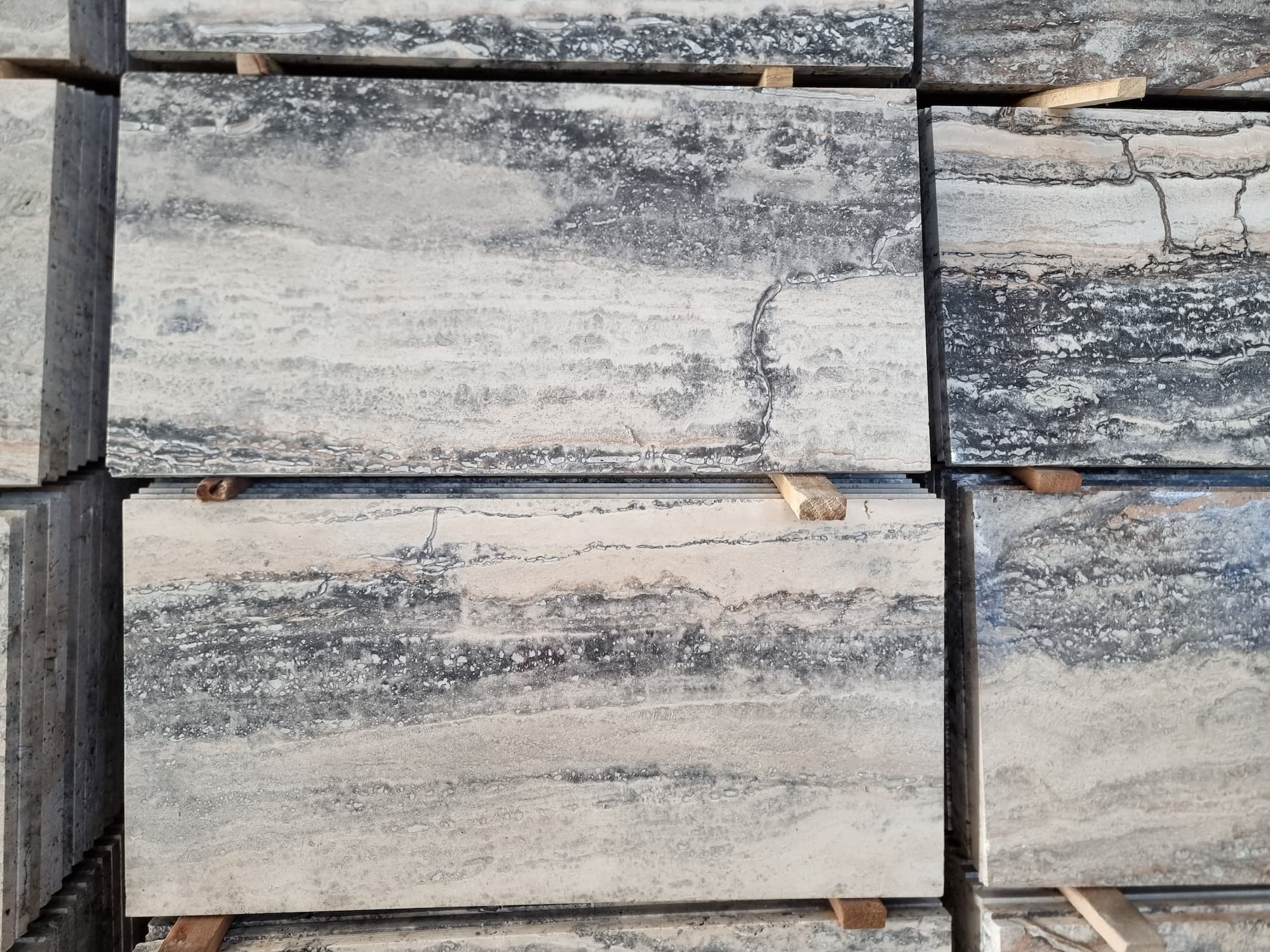Silver travertine is a natural stone known for its diverse colors and patterns, making it a popular choice for various design projects. In this article, we will explore silver travertine’s different colors and patterns, its versatility in design applications, and the maintenance required to preserve its beauty.
1-Introduction to Silver Travertine
Silver travertine is a type of limestone that is formed by mineral deposits from hot springs. It is characterized by its distinct colors and patterns, which are influenced by factors such as the mineral composition and environmental conditions during formation.

2-Colors of Silver Travertine
Silver travertine comes in several colors, each offering its unique aesthetic. The most common colors include silver, gray, beige, ivory, and walnut. Silver gray travertine features a calm, neutral tone with subtle variations in shade, while beige travertine has warmer undertones, resembling the color of sand. Ivory travertine has a creamy hue with hints of yellow or gold, adding warmth to any space. Walnut travertine is characterized by its rich brown color, resembling the natural wood grain.
2.1 Silver Gray
Silver Gray Silver Travertine is characterized by its calm and elegant appearance, featuring a subtle blend of gray tones with varying degrees of light and dark shades. This color variation adds depth and dimension to any space, making it a versatile choice for modern and traditional design schemes. Silver Gray Silver Travertine complements various interior and exterior styles, from sleek contemporary settings to rustic and earthy environments.
2.2 Beige
Beige Silver Travertine exudes warmth and sophistication with its creamy beige hues. This color variation offers a timeless and classic aesthetic, creating a sense of luxury and tranquility in any setting. Beige Silver Travertine is well-suited for creating inviting and cozy atmospheres, making it a popular choice for residential applications such as flooring, countertops, and wall cladding.
2.3 Ivory
Ivory Silver Travertine showcases soft and delicate tones reminiscent of natural ivory. This color variation brings a sense of lightness and airiness to spaces, making them feel bright and open. Ivory Silver Travertine is prized for its versatility and ability to complement various design styles, from traditional to contemporary. Its subtle elegance makes it an ideal choice for creating serene and inviting interiors, particularly in areas where natural light is abundant.
2.4 Walnut
Walnut Silver Travertine features rich brown tones with hints of golden and reddish hues reminiscent of natural walnut wood’s warm and earthy shades. This color variation adds warmth and depth to spaces, creating a cozy and inviting atmosphere. Walnut Silver Travertine is often used to infuse spaces with rustic charm and sophistication. It is famous for flooring, accent walls, and fireplace surrounds in residential and commercial settings.

3-Patterns of Silver Travertine
In addition to its colors, silver travertine also exhibits various patterns that contribute to its visual appeal. Vein-cut travertine showcases linear patterns created by cutting across the natural layers of the stone, resulting in a uniform appearance with prominent veining. Cross-cut travertine displays circular patterns formed by cutting along the layers of the stone, creating a more randomized and organic look. Filled travertine has voids and holes filled with resin or cement, giving it a smoother and more polished appearance. Unfilled travertine retains its natural voids and holes, providing a rustic and textured surface.
4-Versatility in Design
Silver travertine is highly versatile and can be used in various design applications, both indoors and outdoors. It is commonly used for flooring, wall cladding, countertops, and backsplashes in interior spaces, adding elegance and sophistication to kitchens, bathrooms, and living areas. In exterior applications, silver travertine is used for outdoor paving, pool decks, and facades, enhancing the aesthetic appeal of residential and commercial properties.
Study proposal: Silver travertine stone – an economical option for construction

5-Maintenance of Silver Travertine
Proper maintenance is essential to preserve the beauty of silver travertine and ensure its longevity. Regular cleaning with a pH-neutral cleaner helps remove dirt and debris without damaging the stone. Sealing the travertine periodically helps protect it from stains and moisture absorption. Additionally, preventive measures such as using coasters under glasses and avoiding harsh cleaning agents can help maintain the integrity of the stone surface.
6-Conclusion
In conclusion, silver travertine offers a wide range of colors and patterns, making it a versatile and attractive choice for interior and exterior design projects. Silver travertine adds elegance and sophistication to any space, whether used in flooring, wall cladding, countertops, or outdoor paving. With proper maintenance and care, silver travertine can retain its beauty and durability for years.

 Marble
Marble